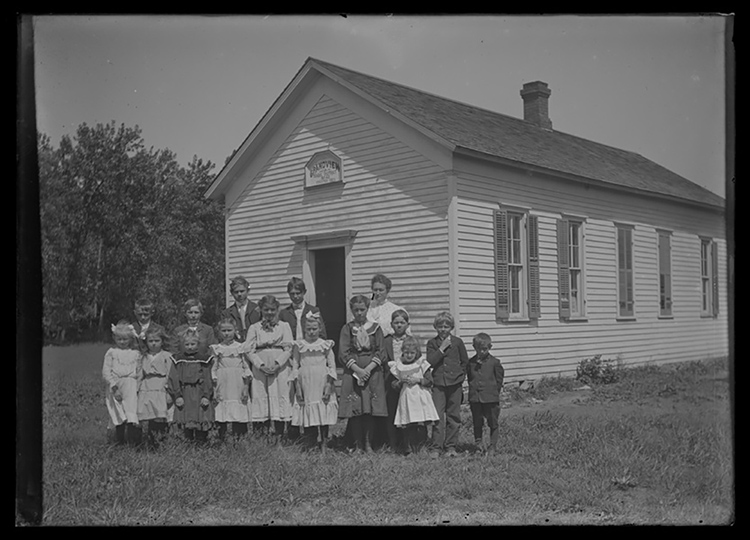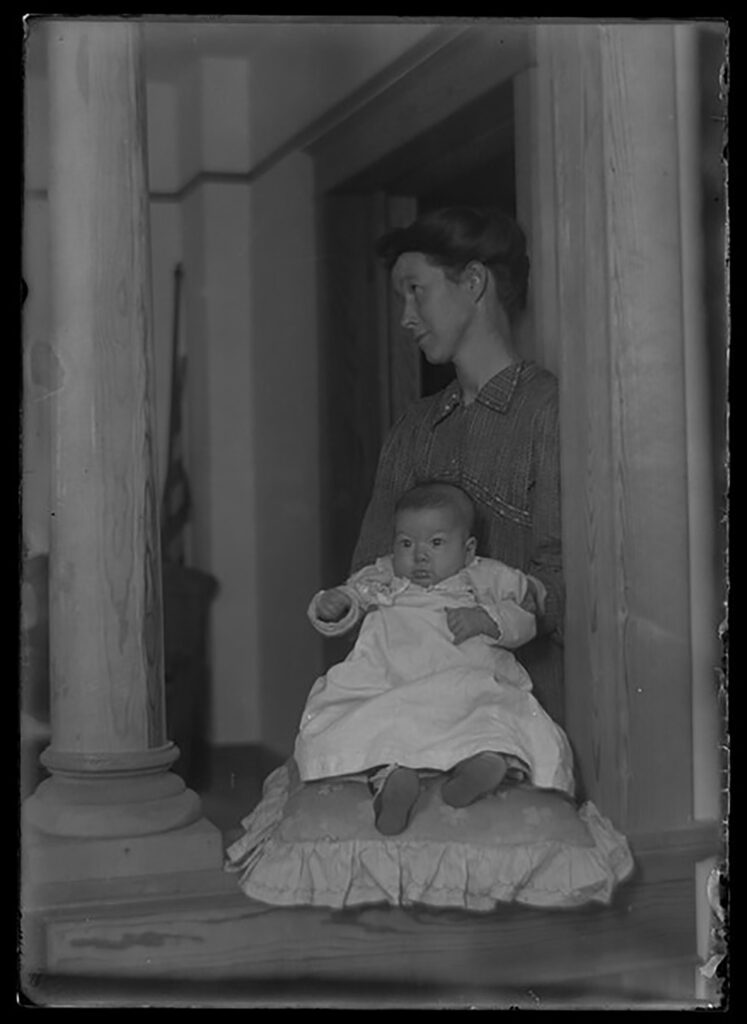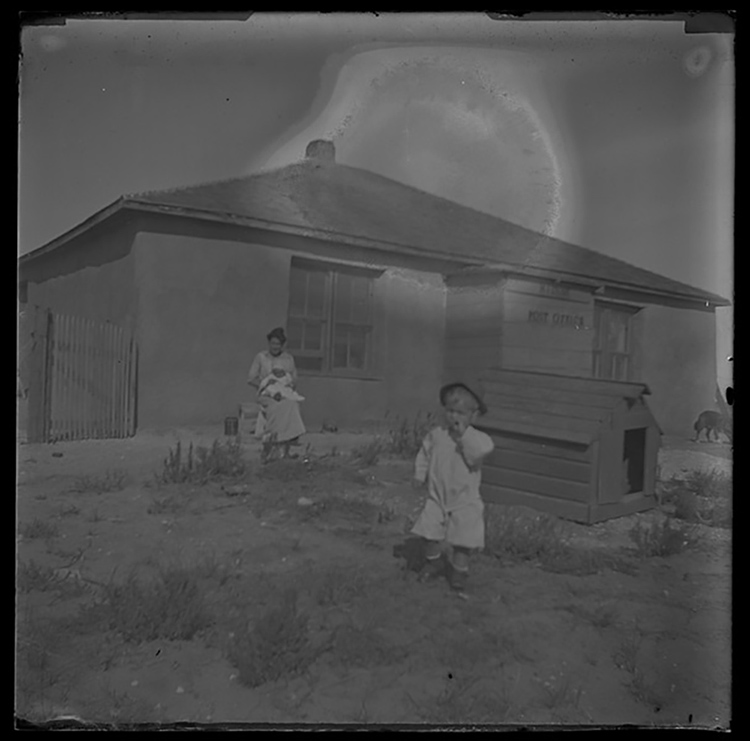Today you can easily snap a photo with your cell phone or digital camera. But capturing a photograph was a complex and time-consuming process in the early days of photography. How many photos would you take if you had to use a sheet of glass to capture every single shot?
Glass plate negatives were invented in the 1850s. A rectangular piece of glass was coated with collodion, a flammable liquid consisting of cellulose nitrate, ether, and other ingredients, before being placed inside the camera box. The chemical-coated glass was exposed to light through the camera lens, transferring the image to the glass. In the beginning, professional photographers, such as Nebraska’s own Solomon D. Butcher, mostly used glass plate negatives. By 1900, technology had improved, and glass plate negatives were more widely accessible to amateur photographers who recorded the daily lives of everyday Nebraskans.
History Nebraska is preserving thousands of glass plate negatives in our collections. Below are highlights from several collections recently digitized by the Digital Curation team at History Nebraska.
Frank A. Woods Collection
Collection Number: RG1803.PH
This collection consists of glass plate negatives believed to have been taken by Frank A. Woods of Seward, Nebraska. The images include people camping, boating, and riding in sleighs. The photographs also show homes and businesses in Seward from approximately 1897 to 1915. The image below features a boy standing on the newsstand counter owned by Frank A. Woods. You can view more images in the Woods Collection here.

Joseph Carter Hruska Collection
Collection Number: RG1819.PH
This collection consists of both glass plate negatives and nitrate film negatives. The images show churches and school buildings throughout eastern and central Nebraska, dating from 1878 to 1908. There are several interior views of classrooms and photographs of students and their teachers posing next to their school buildings. You can view the entire collection here.

David Mandel Collection
Collection Number: RG2193.PH
This collection has both glass plate negatives and nitrate film negatives. Most of the images were taken in Lincoln, Nebraska. The photographs show businesses around town, such as the Gooch Milling and Elevator Company. Several negatives show buildings on the University of Nebraska campus. The image below is a street scene taken on a rainy night in Lincoln. You can view more images in the Mandel Collection here.

Mildred Mellen Collection
Collection Number: RG2237.PH
This collection includes glass plate negatives and nitrate film negatives. Many of the negatives are attributed to Oscar Ward, the father of Mildred (Ward) Mellen. Mildred was born in 1906 in Lincoln, Nebraska. Several images feature Mildred, her brother George, and their mother, Myrtle (Owen) Ward. You can browse this collection here.

Paul Frey Sr. Collection
Collection Number: RG6179.PH
Paul Frey Sr. took these glass plate negatives during the 1910s. The images show life on the Sheridan County, Nebraska, family’s ranch. Despite being a recent Swiss immigrant, Freida Frey became the postmistress of the Hilton Post Office in 1914. As seen in the image below, the post office operated out of the Frey family sod house. Explore more of the Frey Collection here.





